This site uses cookies as defined in our Cookie Policy, by continuing to use this site you agree to their use.
Continue
| Arrive | Depart | ||||||
| 1st01 | SepSep | 202323 | Amsterdam, Netherlands, embark on the TUI Maya | ||||
| Amsterdam combines the unrivaled beauty of the 17th-century Golden Age city center with plenty of museums and art of the highest order, not to mention a remarkably laid-back atmosphere. It all comes together to make this one of the world's most appealing and offbeat metropolises in the world. Built on a latticework of concentric canals like an aquatic rainbow, Amsterdam is known as the City of Canals—but it's no Venice, content to live on moonlight serenades and former glory. Quite the contrary: on nearly every street here you'll find old and new side by side—quiet corners where time seems to be holding its breath next to streets like neon-lit Kalverstraat, and Red Light ladies strutting by the city's oldest church. Indeed, Amsterdam has as many lovely facets as a 40-carat diamond polished by one of the city's gem cutters. It's certainly a metropolis, but a rather small and very accessible one. Locals tend to refer to it as a big village, albeit one that happens to pack the cultural wallop of a major world destination. There are scores of concerts every day, numerous museums, summertime festivals, and, of course, a legendary year-round party scene. It's pretty much impossible to resist Amsterdam's charms. With 7,000 registered monuments, most of which began as the residences and warehouses of humble merchants, set on 160 man-made canals, and traversed by 1,500 or so bridges, Amsterdam has the largest historical inner city in Europe. Its famous circle of waterways, the grachtengordel, was a 17th-century urban expansion plan for the rich and is a lasting testament to the city’s Golden Age. This town is endearing because of its kinder, gentler nature—but a reputation for championing sex, drugs, and rock ’n’ roll does not alone account for Amsterdam's being one of the most popular destinations in Europe: consider that within a single square mile the city harbors some of the greatest achievements in Western art, from Rembrandt to Van Gogh. Not to mention that this is one of Europe's great walking cities, with so many of its treasures in the untouted details: tiny alleyways barely visible on the map, hidden garden courtyards, shop windows, floating houseboats, hidden hofjes(courtyards with almshouses), sudden vistas of church spires, and gabled roofs that look like so many unframed paintings. And don’t forget that the joy lies in details: elaborate gables and witty gable stones denoting the trade of a previous owner. Keep in mind that those XXX symbols you see all over town are not a mark of the city's triple-X reputation. They're part of Amsterdam's official coat of arms—three St. Andrew's crosses, believed to represent the three dangers that have traditionally plagued the city: flood, fire, and pestilence. The coat's motto ("Valiant, determined, compassionate") was introduced in 1947 by Queen Wilhelmina in remembrance of the 1941 February Strike in Amsterdam—the first time in Europe that non-Jewish people protested against the persecution of Jews by the Nazi regime. Criss-crossed by bridges and canals, Amsterdam is known as the Venice of the north. But its waterways are not all it’s famous for. In fact, mention the name of The Netherlands' capital city and you’ll get a whole list of associations. Clogs, cheese and windmills top the list, followed closely by World War history, cutting-edge art and coffee shops. One thing’s for sure, when you join the millions of tourists that flock to the city every year, you won’t have to look hard to find something that interests you.
| |||||||
| 2nd02 | SepSep | 202323 | Amsterdam, Netherlands | ||||
| Amsterdam combines the unrivaled beauty of the 17th-century Golden Age city center with plenty of museums and art of the highest order, not to mention a remarkably laid-back atmosphere. It all comes together to make this one of the world's most appealing and offbeat metropolises in the world. Built on a latticework of concentric canals like an aquatic rainbow, Amsterdam is known as the City of Canals—but it's no Venice, content to live on moonlight serenades and former glory. Quite the contrary: on nearly every street here you'll find old and new side by side—quiet corners where time seems to be holding its breath next to streets like neon-lit Kalverstraat, and Red Light ladies strutting by the city's oldest church. Indeed, Amsterdam has as many lovely facets as a 40-carat diamond polished by one of the city's gem cutters. It's certainly a metropolis, but a rather small and very accessible one. Locals tend to refer to it as a big village, albeit one that happens to pack the cultural wallop of a major world destination. There are scores of concerts every day, numerous museums, summertime festivals, and, of course, a legendary year-round party scene. It's pretty much impossible to resist Amsterdam's charms. With 7,000 registered monuments, most of which began as the residences and warehouses of humble merchants, set on 160 man-made canals, and traversed by 1,500 or so bridges, Amsterdam has the largest historical inner city in Europe. Its famous circle of waterways, the grachtengordel, was a 17th-century urban expansion plan for the rich and is a lasting testament to the city’s Golden Age. This town is endearing because of its kinder, gentler nature—but a reputation for championing sex, drugs, and rock ’n’ roll does not alone account for Amsterdam's being one of the most popular destinations in Europe: consider that within a single square mile the city harbors some of the greatest achievements in Western art, from Rembrandt to Van Gogh. Not to mention that this is one of Europe's great walking cities, with so many of its treasures in the untouted details: tiny alleyways barely visible on the map, hidden garden courtyards, shop windows, floating houseboats, hidden hofjes(courtyards with almshouses), sudden vistas of church spires, and gabled roofs that look like so many unframed paintings. And don’t forget that the joy lies in details: elaborate gables and witty gable stones denoting the trade of a previous owner. Keep in mind that those XXX symbols you see all over town are not a mark of the city's triple-X reputation. They're part of Amsterdam's official coat of arms—three St. Andrew's crosses, believed to represent the three dangers that have traditionally plagued the city: flood, fire, and pestilence. The coat's motto ("Valiant, determined, compassionate") was introduced in 1947 by Queen Wilhelmina in remembrance of the 1941 February Strike in Amsterdam—the first time in Europe that non-Jewish people protested against the persecution of Jews by the Nazi regime. Criss-crossed by bridges and canals, Amsterdam is known as the Venice of the north. But its waterways are not all it’s famous for. In fact, mention the name of The Netherlands' capital city and you’ll get a whole list of associations. Clogs, cheese and windmills top the list, followed closely by World War history, cutting-edge art and coffee shops. One thing’s for sure, when you join the millions of tourists that flock to the city every year, you won’t have to look hard to find something that interests you.
| |||||||
| 3rd03 | SepSep | 202323 | Cologne, Germany | ||||
| Cologne is a city in western Germany located across the Rhine river. It is the oldest in Germany, dating back 2000 years and is considered the region’s cultural hub. The city is known for its iconic landmark of the twin-spired Cologne Cathedral set against the reconstructed Old Town buildings. When in Old Town, visit the historic Old Town Hall and the Roman Church Great St Martin, or take time out and sit at one of the traditional breweries and enjoy the scenery around you. Historical sites such as the Roman Dionysus mosaic and the medieval Overstolzenhaus are worth a visit too. Another iconic sight in Cologne is at Hohenzollern Bridge. Here, local and tourist couples affix padlocks to the railings of the bridge and swear their loyalty to each other, they then throw the key into the Rhein to ensure everlasting love. Cologne is home to over 30 stages providing cabaret, free ensembles, theatre and dance and also celebrates its openly gay culture. Cologne’s an iconic German city for so many reasons – like its beer halls, Christmas markets and a cathedral that’s graced many a holiday brochure cover. It’s also a city of contrasts where ancient Roman walls and Medieval churches rub shoulders with a postmodern quarter chock-full of chic shops. For drinks, head to Paffgen, a popular beer hall and garden. Or visit the Imhoff-Schokoladenmuseum on the waterfront – a museum dedicated to the history of chocolate. Try to pronounce its name while sampling a tasty chunk or two. And don’t leave Cologne without walking through its cathedral. This World Heritage Site hovers majestically over the roofs of the city, and its interior’s just as impressive as its two spikey spires. | |||||||
| 4th04 | SepSep | 202323 | Rüdesheim, Germany | ||||
| Rudesheim’s a little town in the heart of Germany’s wine country. It’s part of the Rhine Gorge, a 65-kilometre-long, fortress-filled UNESCO World Heritage Site. Gothic, 16th-century houses line the water’s edge. And this is backed by a hillside sprinkled with walking trails for hikers, castles for historians and vineyards for wine-lovers. In fact, some of the biggest vineyards in Germany are found near here. Stick about in the centre of town, and you’ve got plenty of shops and bars to nip in and out of, plus a collection of museums focusing on toys, musical instruments and wine. Don’t miss the Niederwald Monument. The ride up to this giant, 100-year-old statue serves up incredible views of the town down below. | |||||||
| 5th05 | SepSep | 202323 | Cruising | ||||
| 6th06 | SepSep | 202323 | Würzburg, Germany | ||||
| Würzburg is a city in Bavaria in southern Germany. It is located on the River Main and is famous for its lavish baroque architecture and Franconian wine. The Residence Palace is a UNESCO World Heritage Site and is highly recommended. It is a well known example of Baroque architecture with its acclaimed staircase, impressive frescos and imperial hall. Other impressive sites in Würzburg include the towering fortress of Festung Marienberg, the Alt Mainbrücke old bridge, which offers ideal views of the Marienberg, Dom St. Kilian cathedral and the many churches of Würzburg including the Romanesque Neumünster. Many of these sites have their own museums for visitors to learn of the history or view unique collections. Other museums of interest are the Mineralogical Museum, exhibiting the world of minerals and stones, and the Botanical Gardens, with various greenhouses and outdoor areas to enjoy. Wine lovers will find an abundance of wineries in Würzburg, offering cellar tours and wine tasting as well as traditional Bavarian cuisines and hospitality. Enjoy wine soup, Gerupfter (cheese spread) and Sauerbraten (braised beef in wine) in a friendly traditional wine tavern. Grand architecture’s the main attraction in Wurzburg, which has a foot planted either side of the Main River. The main port’s on the outskirts, but a short taxi ride gets you among the Baroque buildings in the centre. Fortress Marienberg is perched on a hill overlooking the terracotta rooftops, and a statue-lined Medieval bridge leads to the Romanesque cathedral. Stroll a little further, and you’ll reach the grand UNESCO-accredited palace, known as the Wurzburg Residence. The local wine’s held in high regard, and there’s a brewery in the town that keeps local restaurants stocked with a signature wheat beer. | |||||||
| 7th07 | SepSep | 202323 | Bamberg, Germany | ||||
| Bamberg is a German town located over a landscape of seven hills and the confluence of Regnitz and Main rivers. The town is a UNESCO World Heritage Centre with Old Town home to structures dating back to the 11th century. An iconic landmark to visit in Bamberg is the town hall Altes Rathaus, located on an island in the Regnitz and covered in murals. Bamberg Cathedral, with its four towers and numerous stone carvings, is a striking example of Romanesque architecture. Head to the Market Gardeners District and visit the historical houses where centuries ago the town gardeners would grow and export produce such as onions, seeds and liquorice. In the town centre and heart of Little Venice, the rivers and arched bridges connecting the island city are reminiscent of Venice, with a lively atmosphere and modern shops set in historical surroundings. After a day shopping, head to one of the many Brewery pubs for some popular German beer. Bamberg is famous for its beer and is where its name originated from, with the town being populated by nine traditional breweries. Bamberg has a real love affair with Italy. The town’s often nicknamed the ‘Franconian Rome’, thanks to its assortment of churches dotted across seven surrounding hilltops. It’s big on history, too, just like its Mediterranean counterpart. The charming old town, a 20-minute walk from the port, has the nod of approval from UNESCO. Think timber-framed houses with gabled roofs, intertwined with a 13th-century cathedral and a town hall built into a stone bridge. The multiple rivers laced through the centre have earned the Klein-Venedig neighbourhood the nickname ‘Little Venice’, as well. | |||||||
| 8th08 | SepSep | 202323 | Nuremberg, Germany | ||||
| Nuremberg is a medieval city located in northern Bavaria in Germany. It is Bavaria's second largest city and is noted for its iconic red roofed buildings and medieval architecture. The imperial Castle overlooks Nuremberg and was one of the most important fortifications of the Roman Empire. For more significant cultural history, the Germanisches Nationalmuseum, one of the largest cultural history museums in the German speaking world, offers visitors exhibitions from Prehistoric all the way to present day. Walking tours around the city offer an enjoyable and active way to learn of Nuremberg’s history and culture. Through Old Town, discover fountains, wells, churches, and art treasures, as well as learning of the colourful past and cosmopolitan present of the city and its people. Nuremberg is also home to one of the oldest Christmas markets in Germany, the Nuremberg Christkindlesmarkt, where visitors can purchase traditional handmade decorations and enjoy the famous gingerbread, mulled wine, and grilled sausage from over one hundred and eighty wooden stalls. Nuremberg’s a city that wears lots of different hats. The river port’s set south of the centre, between a bustling industrial area and a wedge of Bavaria’s trademark emerald-coloured forest. Take a 15-minute taxi ride into the old town, and it’s a very different picture. Gothic architecture and houses criss-crossed with timber beams set the tone, and there’s a castle that dates back to Medieval times. Nibble on lebekuchen – the trademark gingerbread-style snack – and get your shopping fix in Lorenzer Altstadt, where luxury and souvenir shops are jumbled together near the river. | |||||||
| 9th09 | SepSep | 202323 | Regensburg, Germany | ||||
| Regensburg is a medieval city of Bavaria in southeast Germany. It is situated on the northern point of the Danube River at its confluence with the Regen and Naab rivers. The city is famous for its iconic 12th Century stone bridge and sixteen arches, crossing the Danube into Old Town and is the oldest preserved bridge in Germany. Regensburg is also noted for its 13th Century Regensburg Cathedral and Gothic twin spires that feature prominently on the city’s skyline. Recently awarded UNESCO World Heritage status, the city is home to many preserved sites. Visit the the 2nd Century Porta Praetoria which served as the north gate to a Roman camp and St Peter’s Cathedral, with its French Gothic architecture. Also the 18th Century Thurn and Taxis Palace and the Old Town Hall, which is now home to the Imperial Diet Museum, are also worth a visit. Regensburg benefits from lots of parks and gardens for visitors to relax in, as well as walks and cycle paths along the banks of the rivers. Known by the locals as Germany’s Medieval miracle, Regensburg’s the perfect stop-in for German sausages and architecture dating back to the 11th century. As you pull into port, you’ll be rewarded with a cityscape view of terracotta-coloured roofs. Step into its narrow alleys, where tiny gift shops and cool cafés line cobbled pavements. Then visit the only Gothic cathedral in Bavaria – its pair of ornate spires will earn you a lot of likes on social media. The 12th-century Stone Bridge is also worth seeing. It was the only reliable way to cross the Danube for nearly 800 years, and is still intact today. And be sure to visit the 900-year-old Historic Sausage Kitchen, which is said to be one of the oldest restaurants in the world. | |||||||
| 9th09 | SepSep | 202323 | Kelheim, Germany | ||||
| A small town with a big history, Kelheim’s a great place to visit for Celtic and Roman throwbacks. Everything’s quite central, so you can reach those must-see landmarks as soon as you dock – like the circular Liberation Hall, edged with 18 striking statues, and the picturesque old canal port. This town’s also a great stop for keen walkers. It’s surrounded by a rugged riverside landscape where historic monuments and buildings are stashed away among forests and cliff faces. Depending on how long you’ve got, it’s worth striking out along the river to see the Danube Gorge. This natural reserve’s recognised for its towering limestone cliffs, topped with overflowing foliage. | |||||||
| 10th10 | SepSep | 202323 | Passau, Germany | ||||
| Passau is a German city located in the Southeast of Germany on the Austrian border. It is situated at the confluence of the rivers Danube, Inn and Ilz. The Three Rivers City, as it’s also known, is unique for its three contrasting currents of blue, green and black. Old Town of Passau is home to towering buildings of striking architecture: the majestic fortress Veste Oberhaus, the Pilgrimage Church Mariahilf and St Stephen's Cathedral. Many of Passau’s attractions can be found in this area, including the New Bishop’s Residence, the Gothic Town Hall, as well as many churches and museums. Visitors can stroll along the riverfront promenades and romantic lanes whilst enjoying the picturesque landscape. For modern art, The Museum of Modern Art and Glass Museum Passau are recommended as they offer something a bit different. Theatre and cabaret are a popular evening pastime, with performances at the former Prince Bishopric Theatre or some lively cabaret and Jazz at the Scharfrichterhaus. Visitors will also find many traditional local Bavarian and Austrian cafes and restaurants offering a cosy atmosphere with home cooked food from local produce. The German town of Passau’s snuggled up against the Austrian border, at the point where the Danube, Inn and Ilz rivers meet. The peach and pistachio-coloured rooftops of the Altstadt stretch out on a skinny peninsula where the waterways come together. Its winding lanes are drizzled with churches, cafés and an Italian-inspired cathedral. Check out the huge church organ inside – it’s one of the biggest in the world. The squares in the town centre feel more like Mediterranean piazzas, thanks to ornate fountains and pastel-coloured houses. Across on the steep northern riverbank, the tree-glazed hills are home to Fortress Veste Oberhaus, which has watched over the town since Napoleonic times. | |||||||
| 11th11 | SepSep | 202323 | Linz, Austria | ||||
| Linz is a city in northern Austria located on both banks of the Danube River and is a short distance from Salzburg and Vienna. Linz has been awarded UNESCO City of Media Arts status and prides itself on offering a broad spectrum of events, activities and cultural institutions. Enjoy popular open air concert such as Klassik am Dom and extravagant street performances, which attract large crowds and popular international artists. Art galleries and centres are in abundance around the city as well as many museums housing international collections and depictions of the history and heritage of Linz. The architecture of the city also plays an important role in Linz’s cultural heritage with Main Square, Old Town and Mariendom Cathedral being some key attractions. Families will enjoy a trip to Postlingberg, located high up in the mountains and featuring a zoo, the Grottenbahn and spectacular views of the river and city below. Much like Budapest, Linz is sliced in half by the Danube River. And Austria’s third-biggest city is a perfect example of half old, half new. It’s got quite the history – composers Mozart and Beethoven both wrote symphonies in the grand city. And it’s easy to see why they stopped by. There’s a stellar collection of extravagant churches, abbeys and Baroque buildings – most of which are handily placed on the fringes of the main square, Hauptplatz. These are matched by ultra-modern museums and art galleries on the riverfront, like the Ars Electronica Center. This place calls itself the Museum of the Future, and lives up to its name with everything from robots to an interactive deep space experience. | |||||||
| 12th12 | SepSep | 202323 | Vienna, Austria | ||||
| Vienna is the capital and largest city of Austria. Located on the Danube River in the East of the country, the city is renowned for its strong music heritage and rich culture, and is the largest German speaking city in the world, outside of Berlin. In 2001, Vienna was designated a UNESCO World Heritage Site and boasts magnificent architecture. The city is home to over 27 castles and 150 palaces including the symbolic Gothic St Stephen’s Cathedral and the iconic Schönbrunn Palace. Art and music are in abundance and all tastes are catered for. Live music venues offer everything from Rock to Opera. Enjoy world class performances at Vienna State Opera and experience the epicentre of international concert life at Musikverein. Modern and historical art can be found in indoor and outdoor spaces around the city, and a visit to the famous Kunsthistorisches Museum (KHM) is highly recommended. Enjoy views of the city from the Danube Tower and the Giant Ferris Wheel, then relax in the ample cosy coffee houses, cafes, bars and restaurants where traditional and international cuisines are served, as well as the locally produced wines. Classical music, palatial architecture and priceless works of art are just a flavour of Vienna’s social standing. It’s Austria’s capital, and sits on the west bank of the Danube River. U-Bahn trains take five or 10 minutes to get from the waterfront to the city centre, where pretty parks fill in the gaps between the libraries, churches and opera houses. Crispy portions of Wiener schnitzel are on every restaurant menu, and on-the-go explorers opt for kasekrainer – a frankfurter filled with melted cheese. Shoppers make a beeline for Karnter Strasse, where big-name brands stand shoulder-to-shoulder. And if you take a stroll to the southern reaches, you’ll find Baroque palaces and grand concert halls. | |||||||
| 13th13 | SepSep | 202323 | Bratislava, Slovakia | ||||
| Bratislava is the capital city of Slovakia and is located along the Danube a river on the borders of Austria and Hungary. The city is surrounded by the Little Carpathians Mountains and vineyards as well as its iconic reconstructed Bratislava Castle overlooking Old Town. The castle offers a picturesque view of the city, the neighbouring countries and is home to the Museum of History. Bratislava offers a blend of historic and modern attractions including the Old Town Hall, now home to the Bratislava City Museum, the UFO Bridge, Martin’s Cathedral, Michael’s Gate and Blue Church St Elizabeth’s. Bratislava is home to one of the oldest city parks in Central Europe and is popular with walkers, runners and cyclists as is the city forest park and foothills of the Carpathian Mountains. The city is popular for its locally brewed beers and has many micro-breweries and underground beer cellars. The local cuisine of Bratislava is an eclectic influence of European cultures including Slovak, Hungarian, Austrian and German and serves as a reminder of the history of this cosmopolitan city. However, visitors will find an array of offerings to suit all tastes with lunch being the main meal of the day and roast goose with lokse considered a signature dish of the area. The Slovakian capital spans the centuries with its old-and-new appeal. Bratislava Castle’s the standout site – you can see it from practically anywhere in the city, thanks to its hilltop spot beside the Danube River. The pumpkin-coloured rooftops of the old town are slotted together like Tetris blocks, and you’ll see gold crowns studded into the pavement that mark the city’s church-filled Coronation Route. Ornate opera houses and a turquoise-tinted Art Nouveau church are among the signature sights, and beer and dumplings is the go-to combo in most restaurants. At the modern end of the scale, the UFO Bridge – which resembles a flying saucer – has a viewing deck above the city skyline. | |||||||
| 14th14 | SepSep | 202323 | Budapest, Hungary | ||||
| Budapest is the capital city of Hungary and is located over the River Danube. It is one of the largest cities in the European Union and much of its historical sites have been awarded UNESCO World Heritage Site status. Originally formed in 1873 by the joining of Buda, Pest and Old Buda, the city suffered heavy destruction during World War II and was rebuilt into the country's political, cultural and commercial hub it is now. Bridges and railways connect the city over the Danube, including the six small islands situated on the river themselves. Some of Budapest’s UNESCO World Heritage sites include Chain Bridge, Budapest Parliament, the striking Matthias church and the iconic Royal Palace visible from every location within Budapest City. The Castle Hills district architecture represents over a thousand years of the city's history with examples of Roman, Turkish, Gothic, Renaissance and Art Nouveau styles. Budapest also has a rich Jewish heritage and is home to the largest synagogue in Europe. The city has an abundance of restaurants offering international cuisines, as well as traditional Hungarian dishes ,including goulash soup, a very popular lunchtime dish. Hungarians enjoy their coffee so a traditional cafe is never hard to find. Sliced in half by the Danube, Budapest is like two cities in one. Hilly Buda sits to the west of the river, crowned by a vast 18th-century castle and the turreted Fisherman’s Bastion. To the east, you’ve got Pest, which is home to one of the grandest parliament buildings in the world. The whole city’s a treasure chest for architecture, though – even its famous thermal baths are style icons, from Ottoman-era Rudas to canary-yellow Szechenyi and its open-air number. And its quirky ruin bars – housed in derelict, open-air buildings – are anything but ordinary. Go for a drink at Szimpla Kert and you can take a seat in a cut-open car or admire the graffiti-covered walls. | |||||||
| 15th15 | SepSep | 202323 | Budapest, Hungary, disembark the TUI Maya | ||||
| Budapest is the capital city of Hungary and is located over the River Danube. It is one of the largest cities in the European Union and much of its historical sites have been awarded UNESCO World Heritage Site status. Originally formed in 1873 by the joining of Buda, Pest and Old Buda, the city suffered heavy destruction during World War II and was rebuilt into the country's political, cultural and commercial hub it is now. Bridges and railways connect the city over the Danube, including the six small islands situated on the river themselves. Some of Budapest’s UNESCO World Heritage sites include Chain Bridge, Budapest Parliament, the striking Matthias church and the iconic Royal Palace visible from every location within Budapest City. The Castle Hills district architecture represents over a thousand years of the city's history with examples of Roman, Turkish, Gothic, Renaissance and Art Nouveau styles. Budapest also has a rich Jewish heritage and is home to the largest synagogue in Europe. The city has an abundance of restaurants offering international cuisines, as well as traditional Hungarian dishes ,including goulash soup, a very popular lunchtime dish. Hungarians enjoy their coffee so a traditional cafe is never hard to find. Sliced in half by the Danube, Budapest is like two cities in one. Hilly Buda sits to the west of the river, crowned by a vast 18th-century castle and the turreted Fisherman’s Bastion. To the east, you’ve got Pest, which is home to one of the grandest parliament buildings in the world. The whole city’s a treasure chest for architecture, though – even its famous thermal baths are style icons, from Ottoman-era Rudas to canary-yellow Szechenyi and its open-air number. And its quirky ruin bars – housed in derelict, open-air buildings – are anything but ordinary. Go for a drink at Szimpla Kert and you can take a seat in a cut-open car or admire the graffiti-covered walls. | |||||||
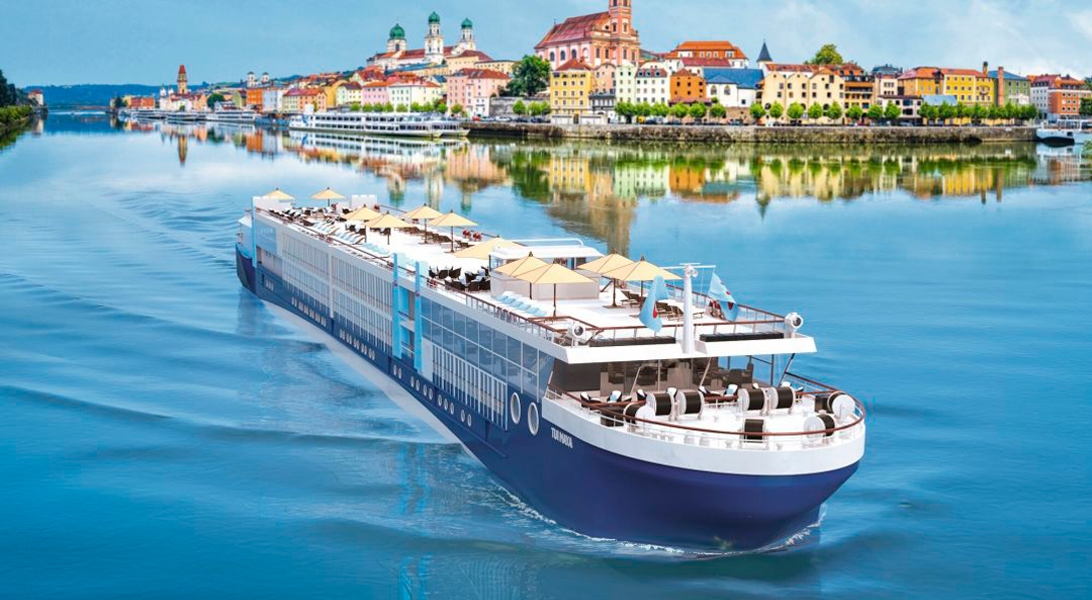




The images shown are for illustration purposes only and may not be an exact representation of what you find on the ship.
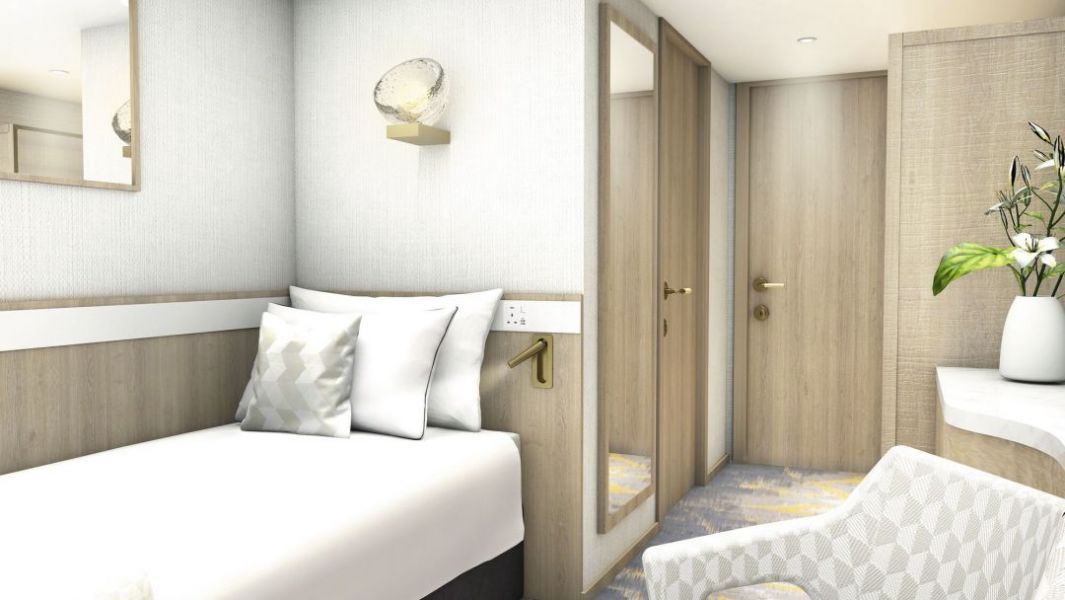
These single cabins are the same size as our standard cabins at 12m². Instead of a double bed, you’ll get a single, as well as a desk and lounge chair.
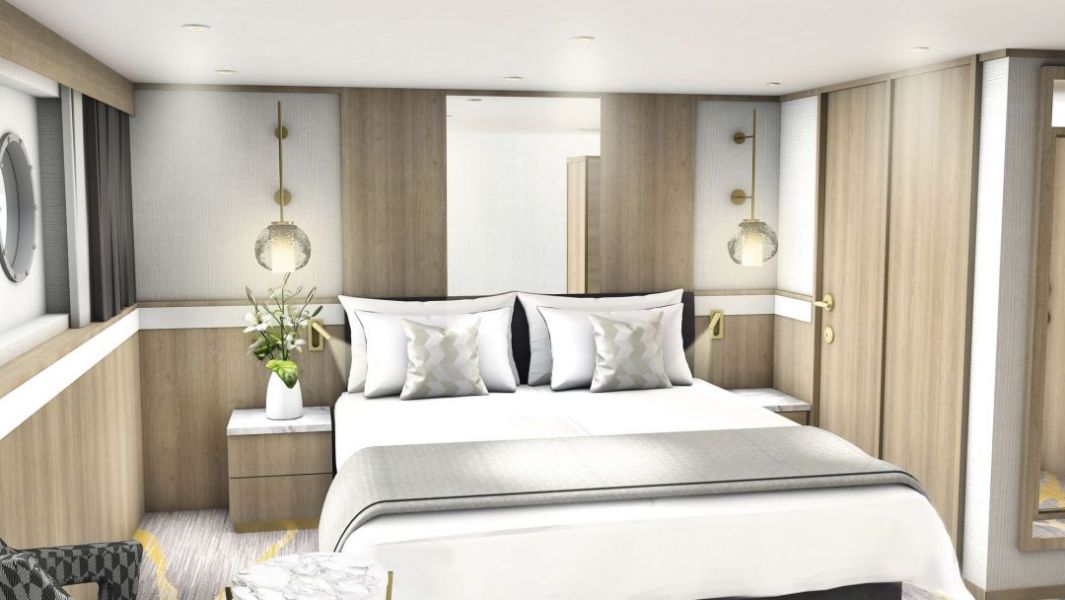
| Grade Code | From | To | |
| ZS01 | Deck 1 Superior Cabin | £2,189 | £2,189 |
You’ll get a little bit of extra space with a 15m² superior cabin, which lines up a king-size bed – which can be converted into two singles – along with a desk and a lounge chair.
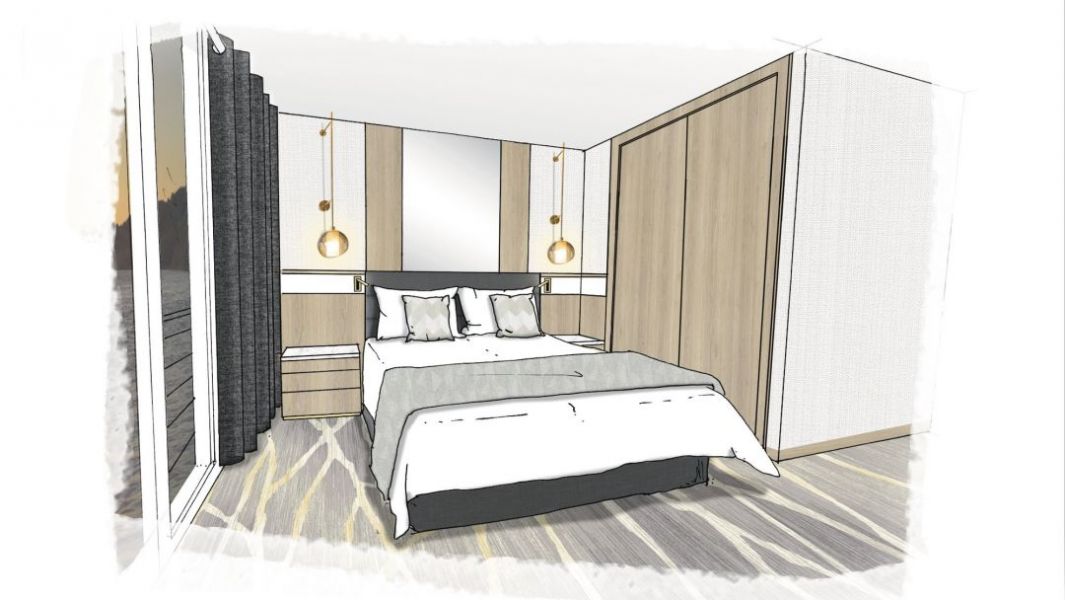
These cabins are the same size as all the standard cabins, at 12m², but they come with the added bonus of a French balcony. Floor-to-ceiling doors also make the views unmissable. There’s a desk and a fixed double bed.
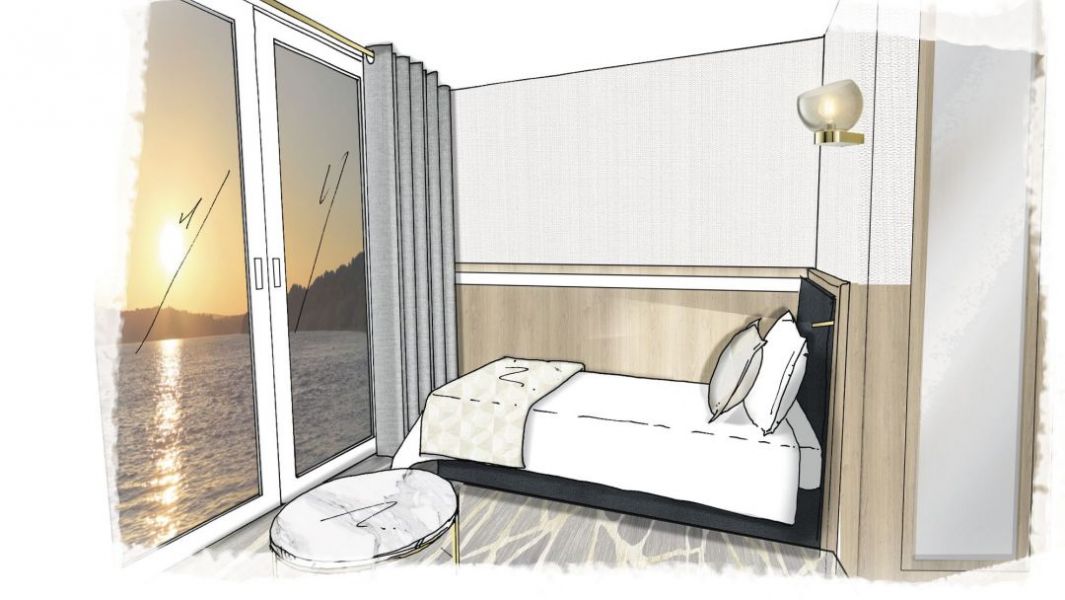
These are like our standard single cabins, but instead of a porthole, you can take in the view from your own French balcony, which is complemented by floor-to-ceiling glass doors. That’s on top of a single bed, a desk and a lounge chair. Please note, the cabin image is the planned appearance.
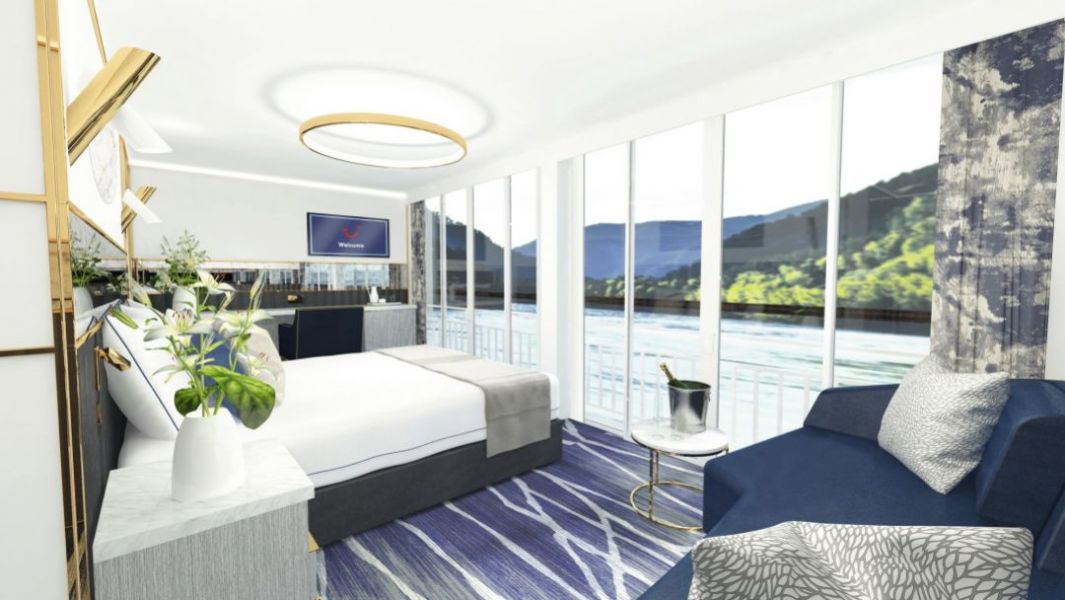
Treat yourself to a French balcony suite, so you can make the most of the views. At 24m², they pack in a king-size bed, which can be converted into two singles. Plus, you’ll also get the added luxury of a bigger bathroom, a dressing area, a sofa, a coffee table and a desk. Please note, the cabin image is the planned appearance.
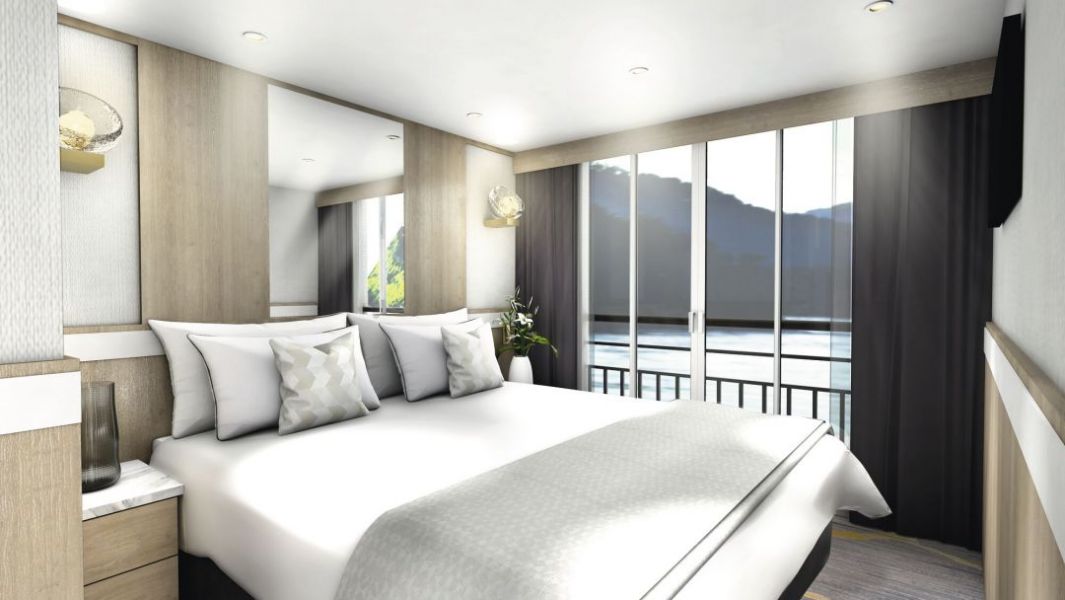
On Deck 2, the standard cabins come with a full-sized window, instead of a porthole. They’re still 12m2 and come with a desk and a fixed double bed.
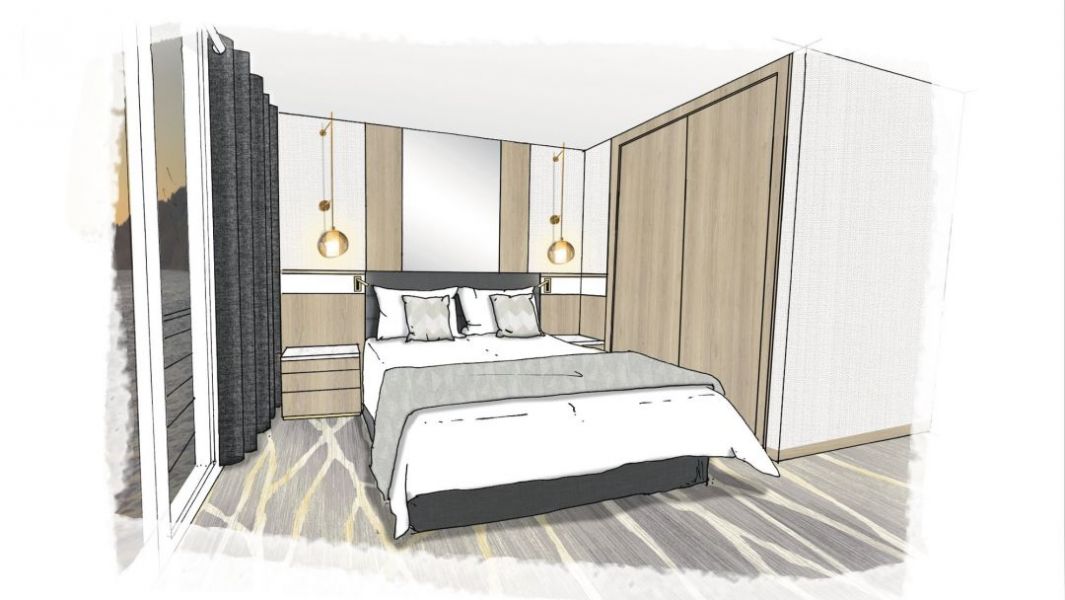
Just like the superior cabins on Deck 1, these ones line up a king-size bed, which can be made into two singles, plus a desk and a lounge chair. They’re still 15m², but floor-to-ceiling glass doors lead out onto a French balcony. Please note, the cabin image is the planned appearance.

These cabins are the same size as all the standard cabins, at 12m², but they come with the added bonus of a French balcony. Floor-to-ceiling doors also make the views unmissable. There’s a desk and a fixed double bed.

Treat yourself to a French balcony suite, so you can make the most of the views. At 24m², they pack in a king-size bed, which can be converted into two singles. Plus, you’ll also get the added luxury of a bigger bathroom, a dressing area, a sofa, a coffee table and a desk. Please note, the cabin image is the planned appearance.
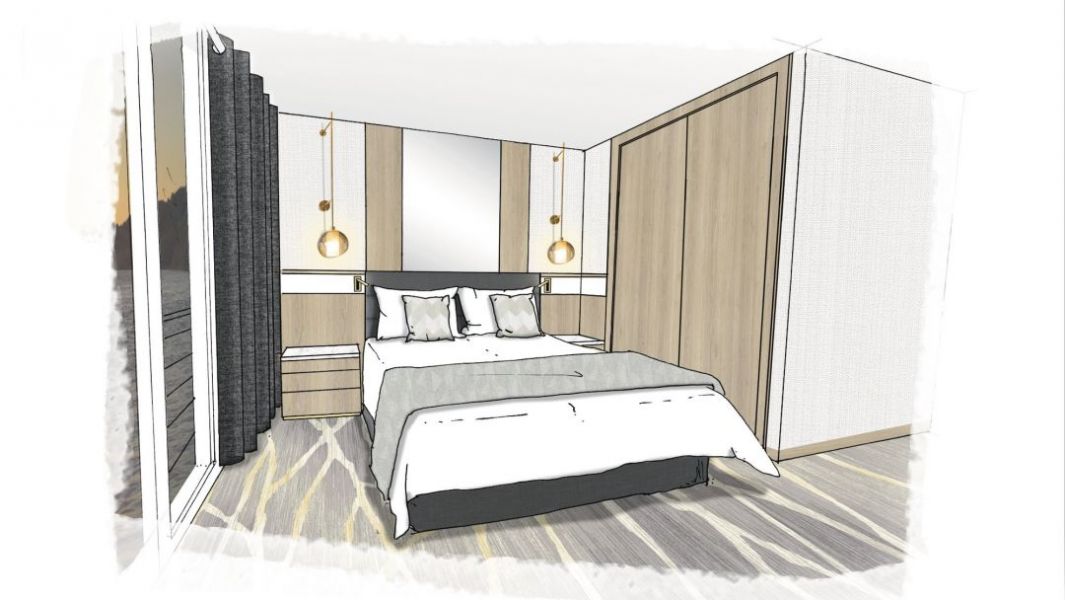
Just like the superior cabins on Deck 1, these ones line up a king-size bed, which can be made into two singles, plus a desk and a lounge chair. They’re still 15m², but floor-to-ceiling glass doors lead out onto a French balcony. Please note, the cabin image is the planned appearance.
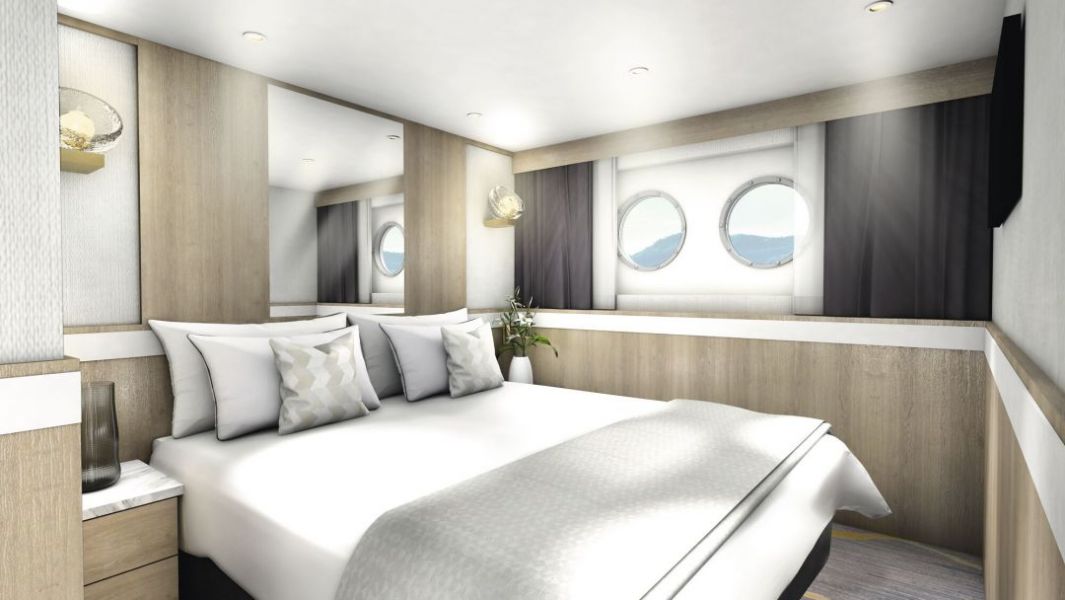
Our standard cabins measure up at 12m² and come with a desk and a fixed double bed.
The images shown are for illustration purposes only and may not be an exact representation of what you find on the ship.

As well as sunbeds, the top deck’s laid out with tables and chairs for al fresco dining. When the weather permits, we’ll put on outdoor events, like barbecues. You can get drinks up here, too.
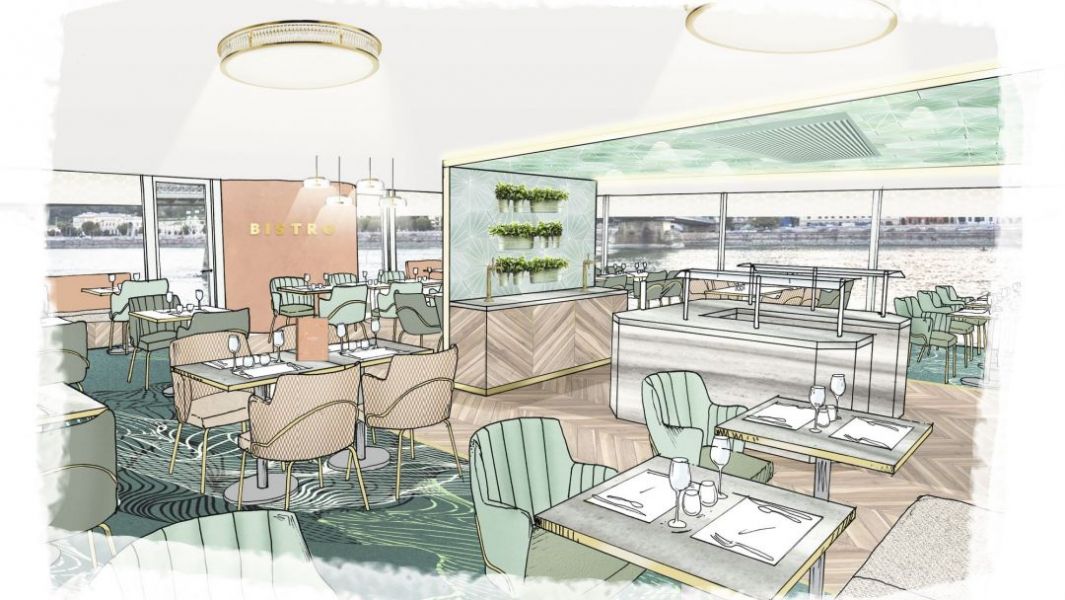
Things are a little more casual in Bistro, our second restaurant. It’s attached at the hip with Verdastro, giving you an extra dining option. Like Verdastro, it’s open for breakfast, lunch and dinner. Plus, you can choose from the à la carte menu, or sample a bit of everything at the buffet.
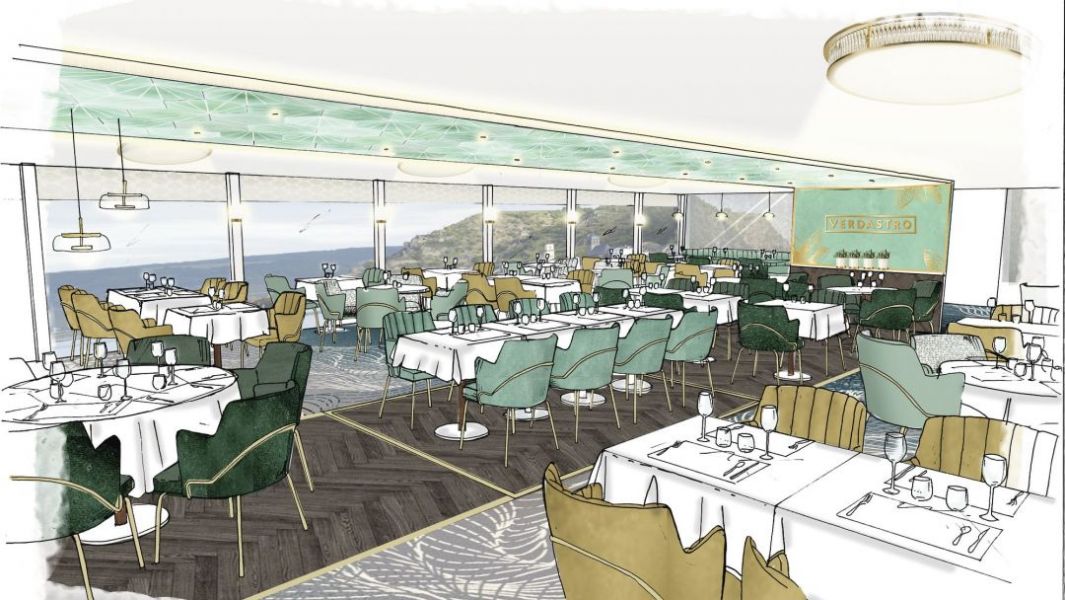
There’s an elegant green-and-gold colour scheme in our main restaurant, which serves breakfast, lunch and dinner. The menu changes daily, with fresh, seasonal food sourced from local suppliers. A buffet station puts on a pile-your-plate-high spread for breakfast and lunch, as well. Meanwhile, dinner is an à la carte affair with waiter service. Seating-wise, you can pick from tables for two, or pull up a chair with friends on a table for four or six.
The images shown are for illustration purposes only and may not be an exact representation of what you find on the ship.
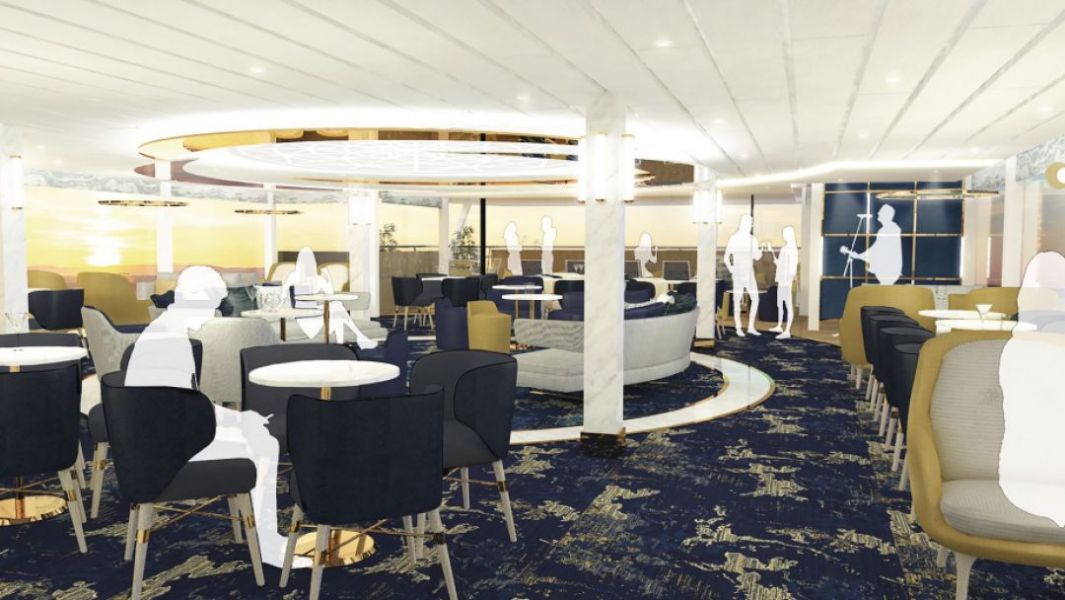
This lounge takes pride of place at the heart of our ships. As with all our venues, you can expect widescreen windows for admiring the panoramic views. You can get an even better look from the outdoor terrace, though – it’s a sheltered spot, kitted out with comfy sofas and heaters. After dark, Observatory hosts the nightly entertainment, which ranges from talented musicians to special guest acts, like comedians.
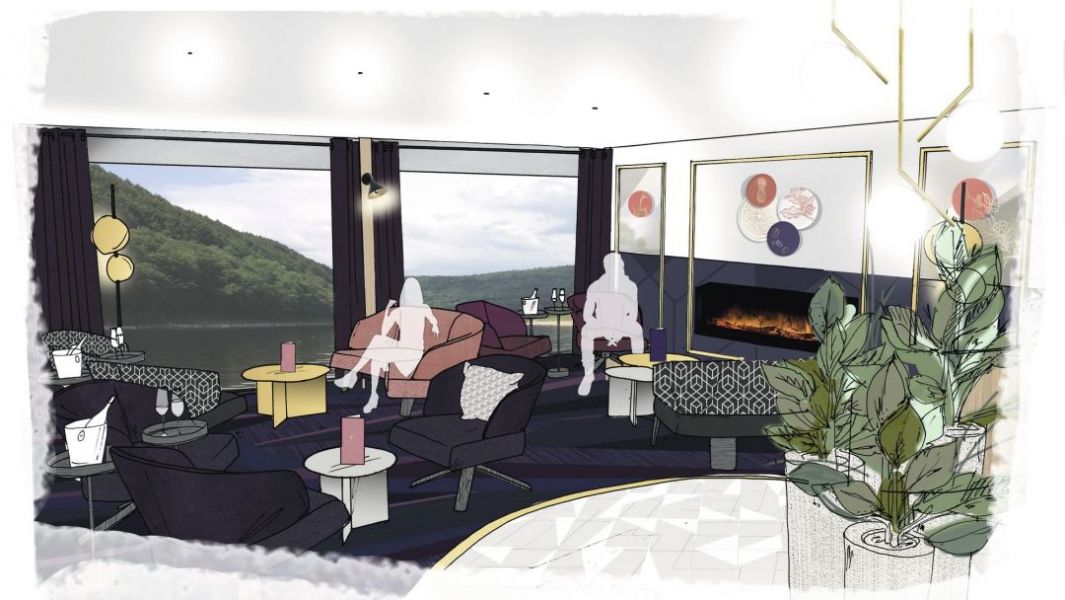
Coffee and cocktails are the cornerstones of this bar. Plush navy chairs, brass fittings and mirrored tables set a sophisticated scene. By day, you can sip a coffee* while taking in the views. At night, you can clink pre-dinner cocktails* in front of a roaring digital fireplace, before heading to one of the restaurants.
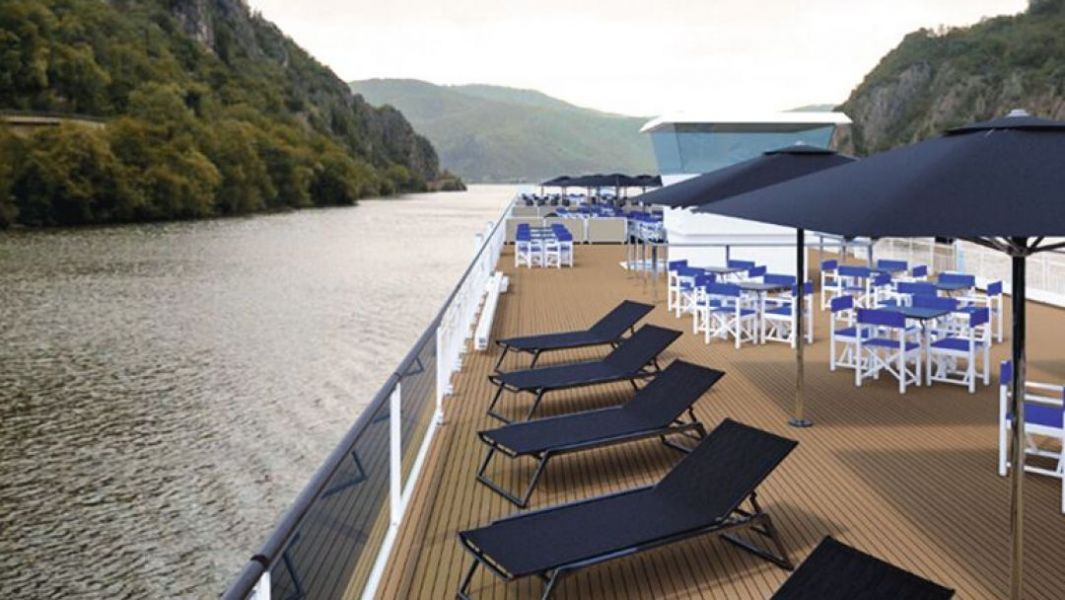
The views from the top deck are worth swooning over, but that’s not all it’s good for. It’s split into zones, with different areas for relaxation and activities. You’ll find a space for barbecues, sofas for lounging on, a sunbathing space with daybeds and sunbeds, and a herb garden. When you want to switch up the pace, there’s an area for activities, where yoga, pilates and stretching classes take place. You can check the full activity schedule once you’re onboard.
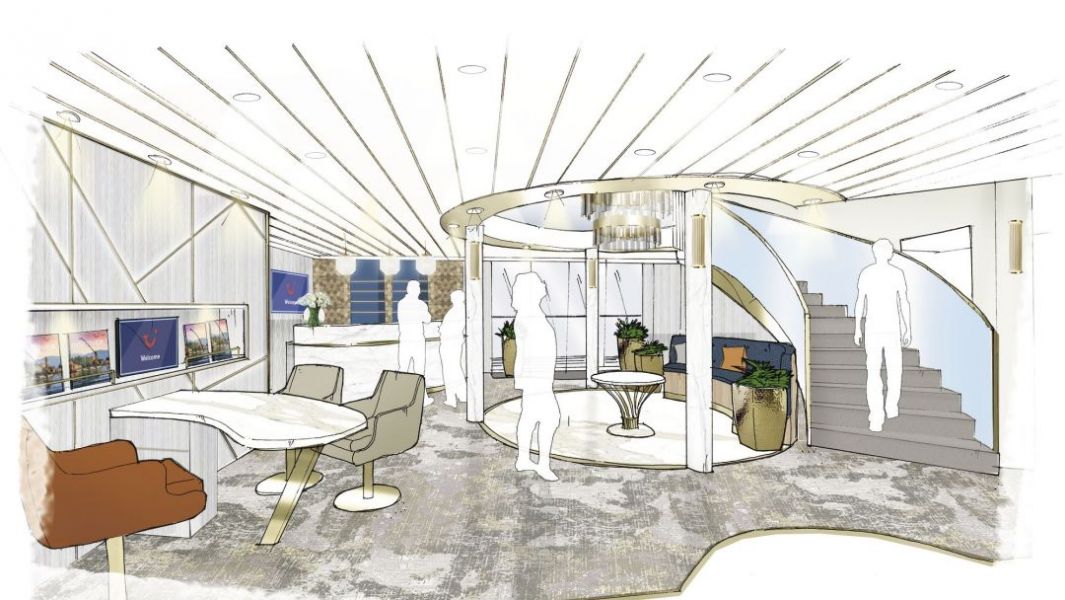
The images shown are for illustration purposes only and may not be an exact representation of what you find on the ship.
The images shown are for illustration purposes only and may not be an exact representation of what you find on the ship.
| 14 nights cruising on the Dutch Waterways | |||
| Port Taxes and Fees | |||
 | ABTA and ATOL Protection* | ||
Date 1st Sep 2023 |
Nts 14 |
Please call for availability |
| Oceanview staterooms from | £2,189pp | ||
| ZS01 | Deck 1 Superior Cabin | £2,189pp | |
| Fri 2nd Jun 202302 Jun 23 | Please call for availability |
Fusion Cruises when selling travel arrangements is a trading name of The Midcounties Co-operative Ltd. Fusion Cruises is an Accredited Body Member of Midcounties Co-operative Travel Consortium. (ABTA:P6652, ATOL:6053).
Book with Confidence. We are a Member of ABTA which means you have the benefit of ABTA’s assistance and Code of Conduct.
Some of the flights and flight-inclusive holidays on this website are financially protected by the ATOL scheme but ATOL protection does not apply to all holiday and travel services offered on this website. This website will provide you with information on the protection that applies in the case of each holiday and travel service offered before you make your booking. If you do not receive an ATOL Certificate then the booking will not be ATOL protected. If you do receive an ATOL Certificate but all parts of your trip are not listed on it, those parts will not be ATOL protected. Please see our booking conditions for information, or for more information about financial protection and the ATOL Certificate go to: www.caa.co.uk
